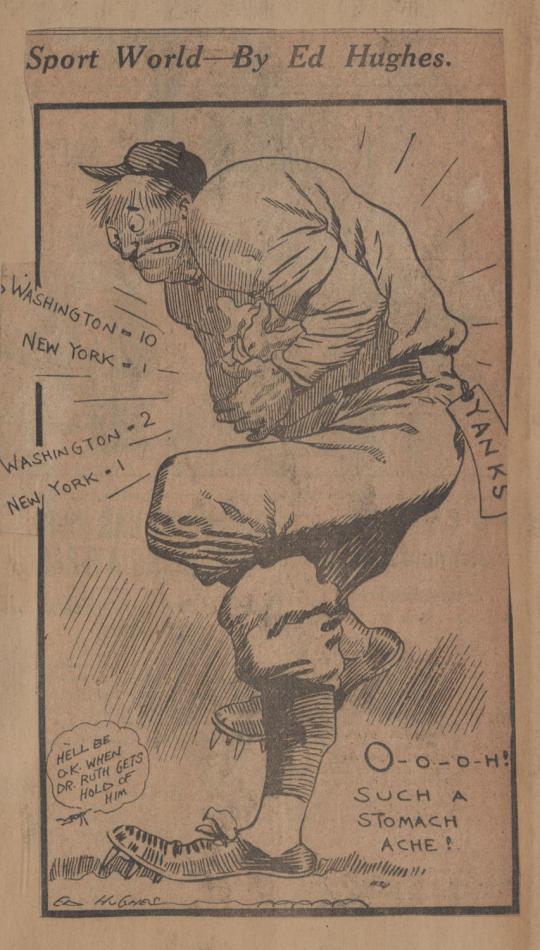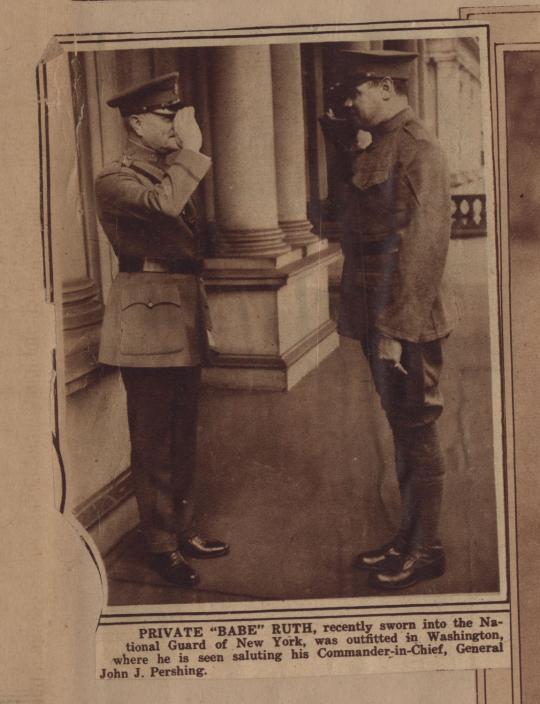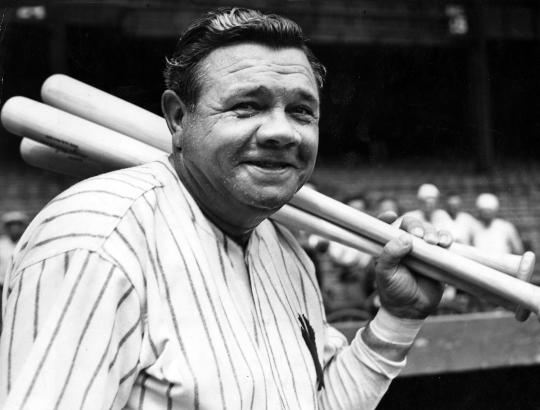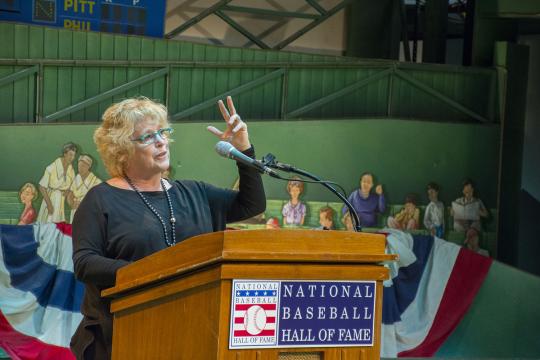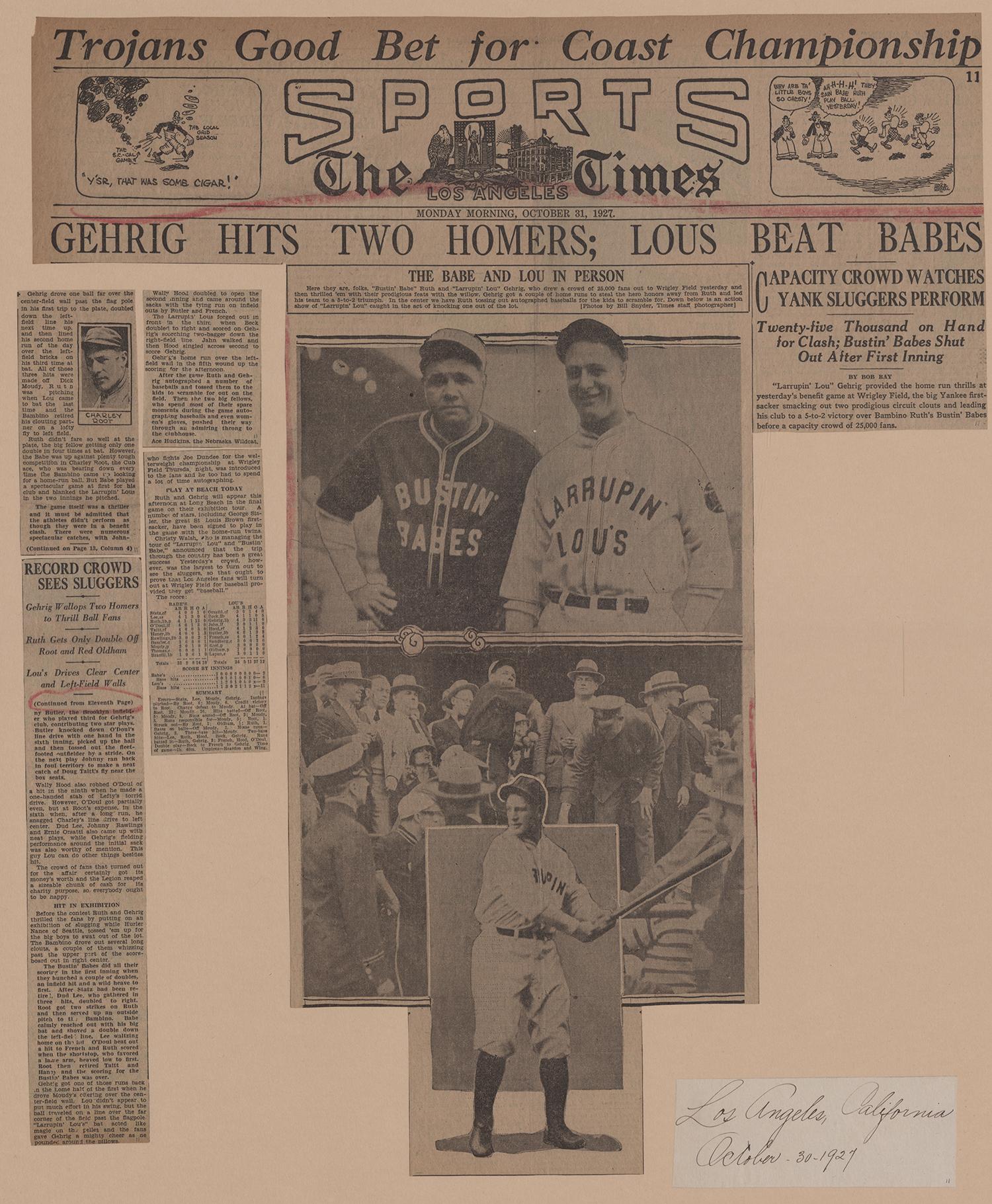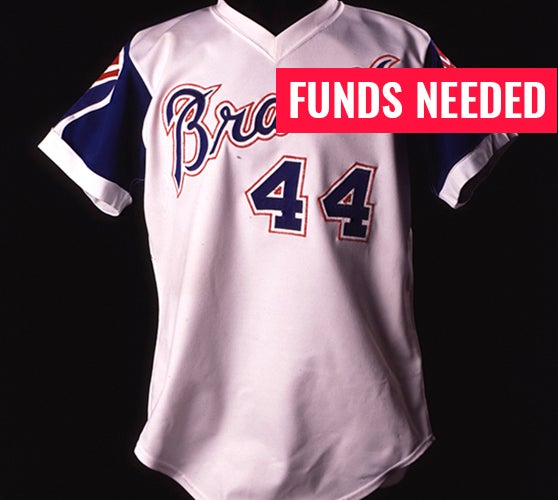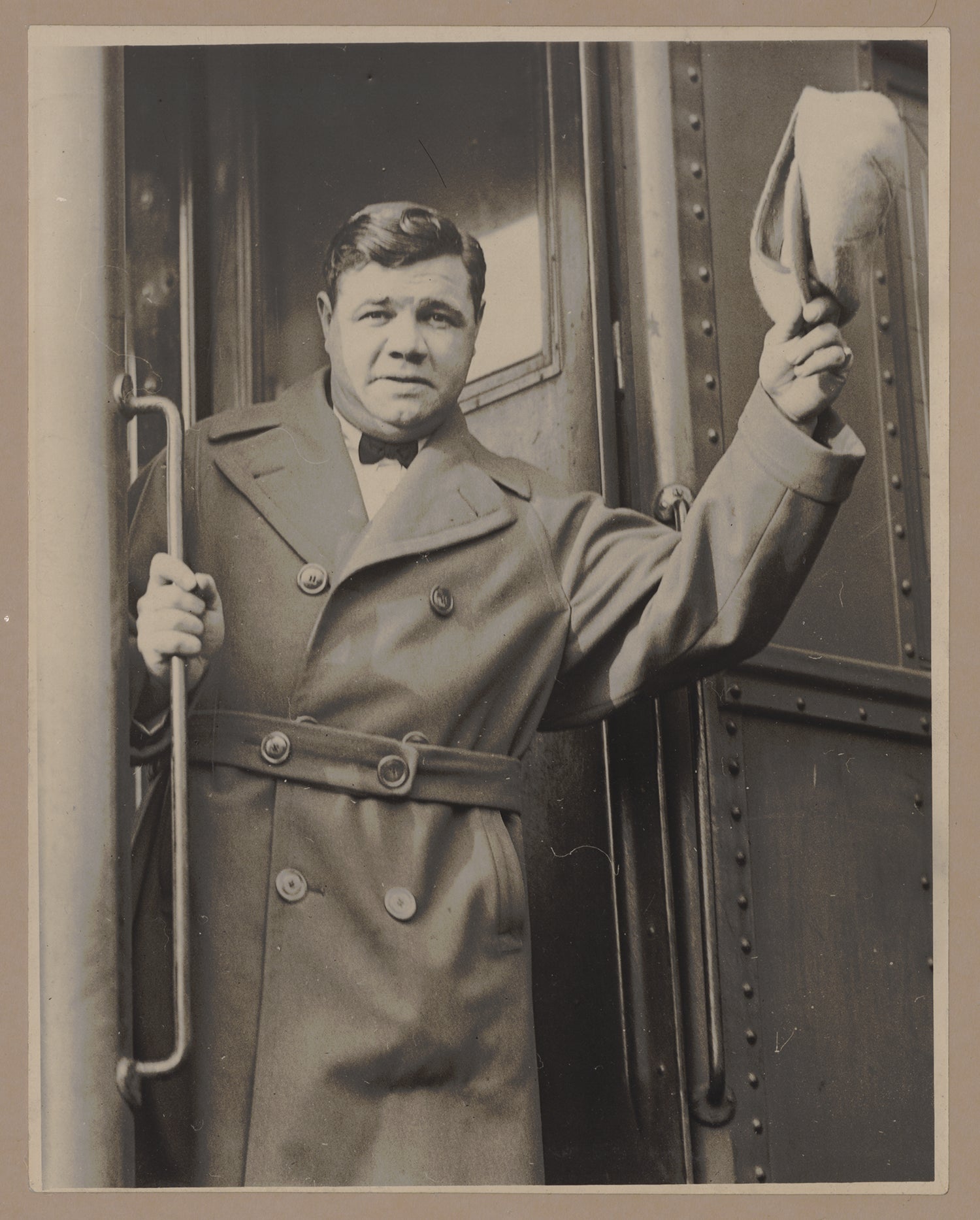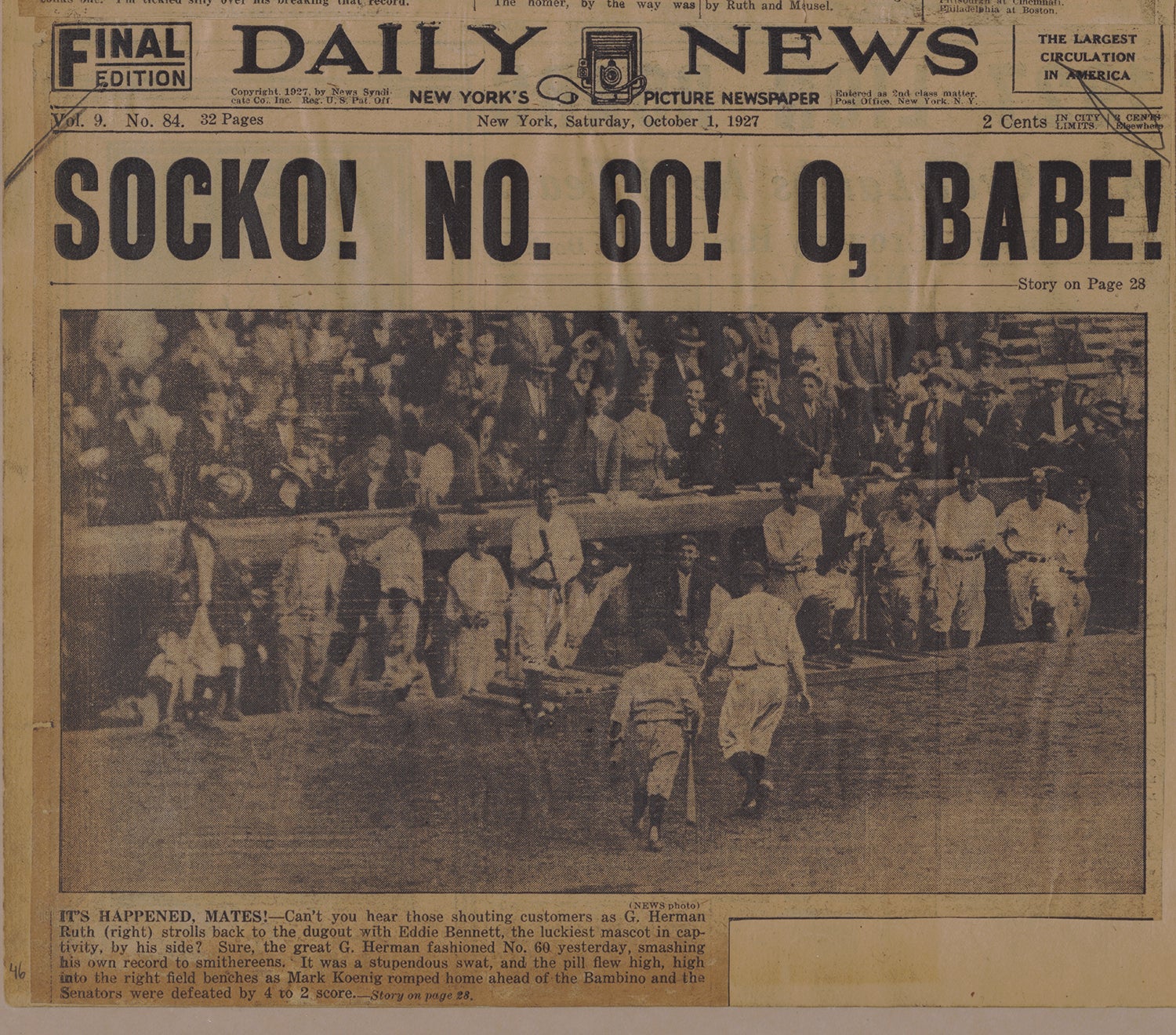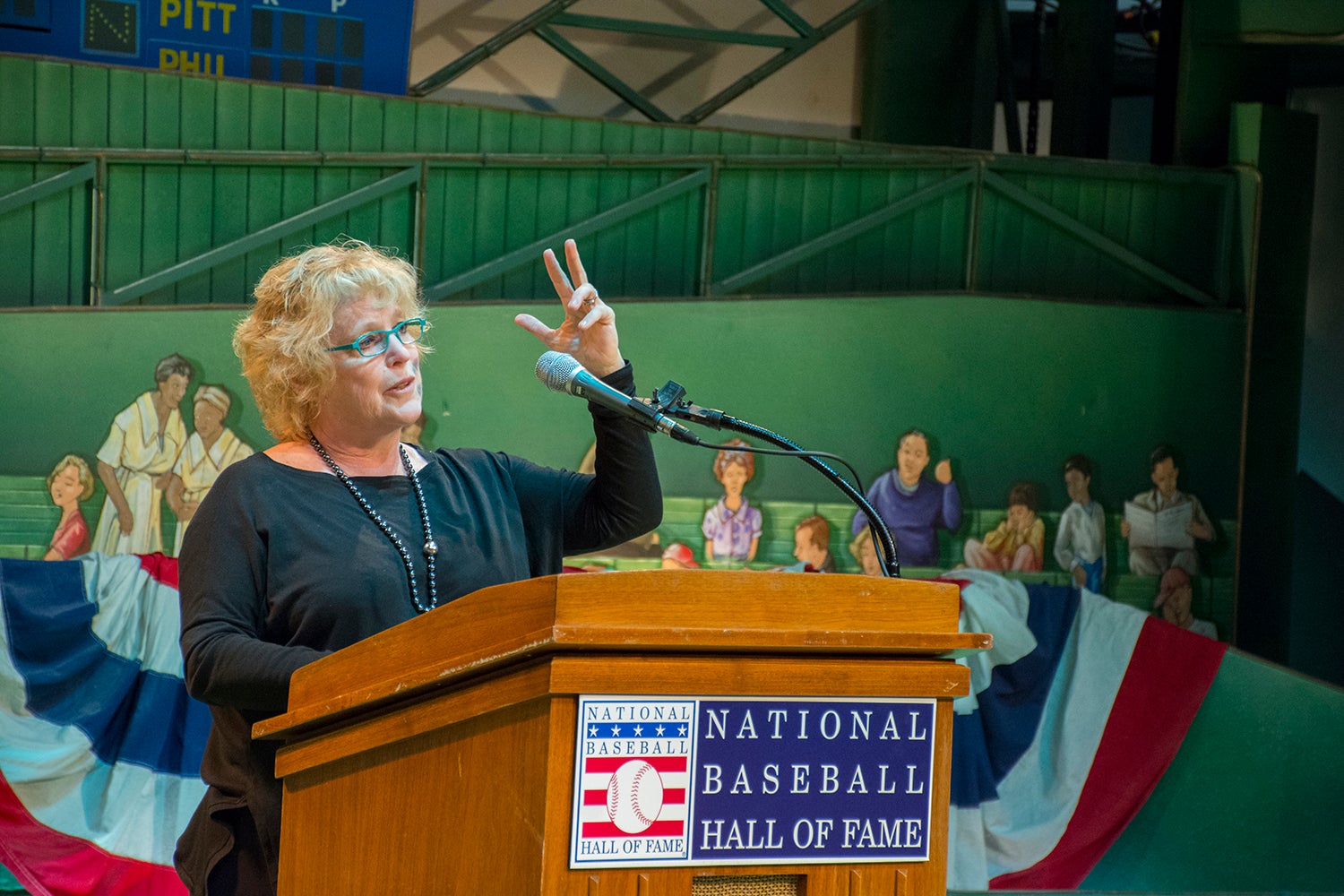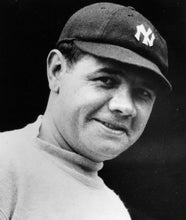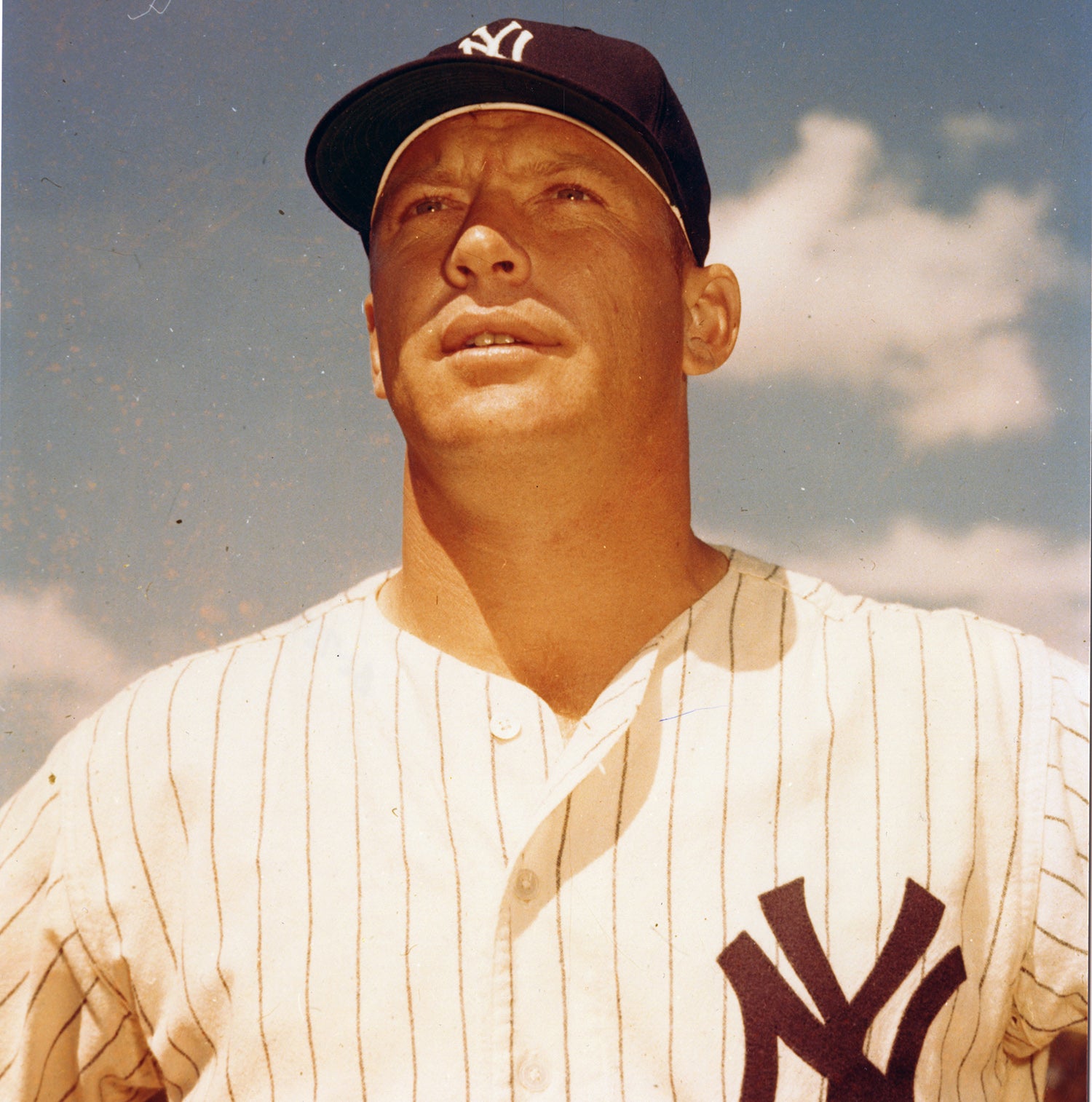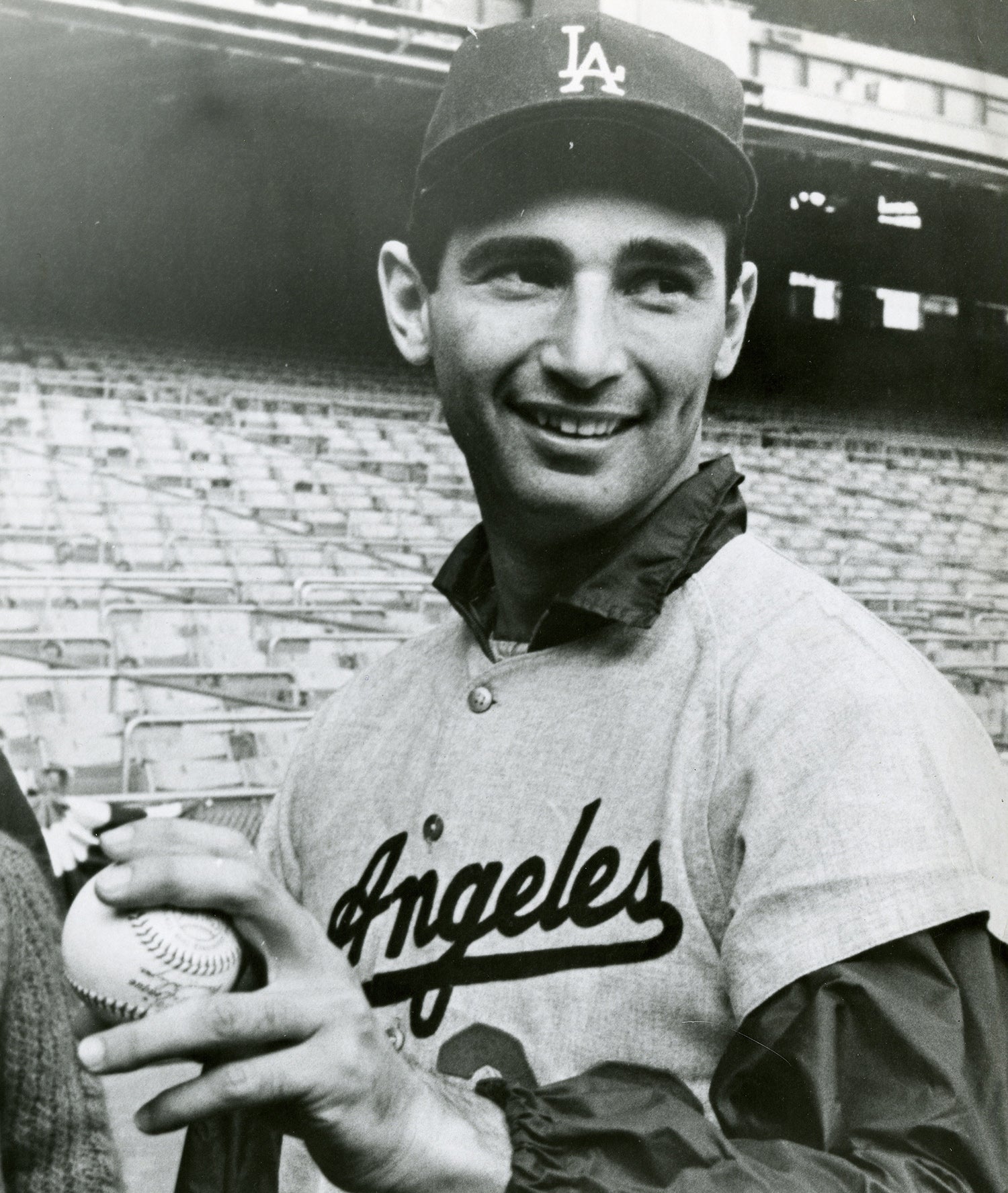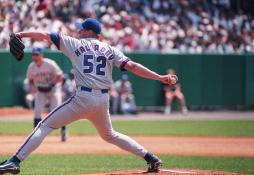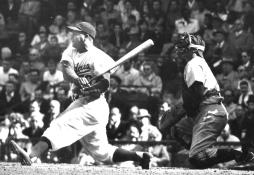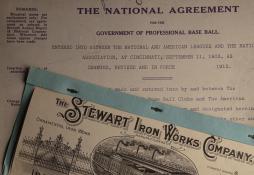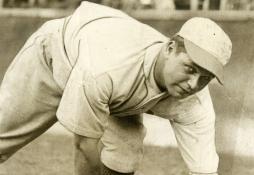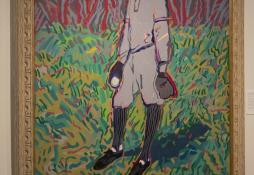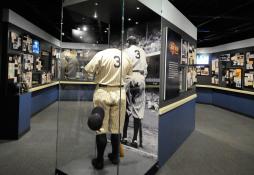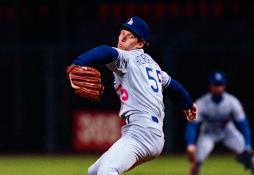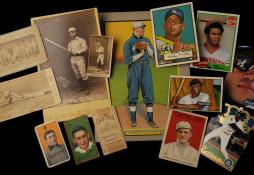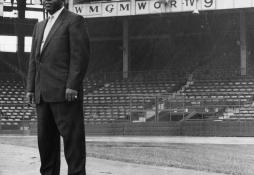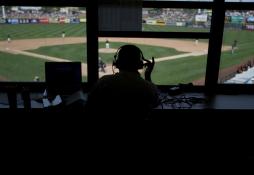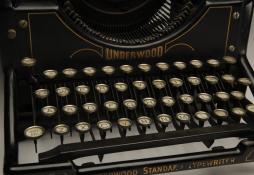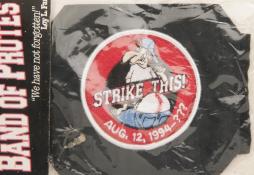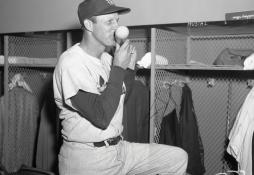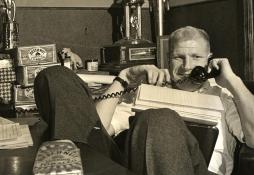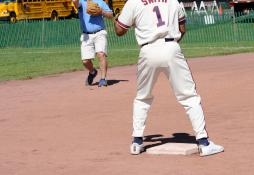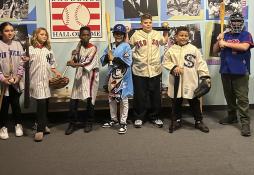- Home
- Our Stories
- Jane Leavy, the Museum’s Library, and Digitization
Jane Leavy, the Museum’s Library, and Digitization
Jane Leavy is an acclaimed author who has written biographies on some of baseball’s biggest names, but her most recent work involves maybe the game’s biggest name. For her upcoming book on Babe Ruth, she painstakingly went through page after page of scrapbooks that until recently were only available to peruse onsite at the Baseball Hall of Fame Library.
Now, 25 volumes of 10 different Ruth scrapbooks in the collection of the National Baseball Hall of Fame and Museum, totaling more than 1,400 pages and donated in 1956 by Ruth’s widow, are available online at collection.baseballhall.org. These one-of-a-kind leather-bound scrapbooks, created by Ruth’s agent Christy Walsh from 1921 to 1935, provide a unique look at Ruth’s career through newspaper clippings, letters and photographs, and give a glimpse at the authentic Ruth.
Additional digitized material – including photos, audio, video and text – from the Museum collection will be published every other Wednesday as the Museum adds to the PASTIME (Public Archive System To Interact with the Museum Electronically) online collection.
The next group of materials scheduled to be available on PASTIME beginning Sept. 21 will feature items related to Jackie Robinson and the integration of baseball. The third release scheduled for Oct. 5 will include materials related to the first five Hall of Famers elected in 1936: Ty Cobb, Walter Johnson, Christy Mathewson, Honus Wagner and Ruth. Future release will include oral histories, additional scrapbooks and Negro League photos.
In a recent telephone interview with Leavy, a former sportswriter with The Washington Post and the author of the New York Times bestsellers The Last Boy: Mickey Mantle and the End of America’s Childhood and Sandy Koufax: A Lefty’s Legacy, she talked about the important role the Ruth scrapbooks have played in her own research.
Hall of Fame
Can you talk about your introduction to the Ruth scrapbooks?
Jane Leavy
I started researching Babe Ruth and his barnstorming tours in the mid-1990s. I remember taking notes on something that had the progression through the 1927 tour and that is what gave me initially the idea to do a book that would use those tours as a vehicle for talking about Babe Ruth at the apogee of fame. The title of the book that I’m writing right now is The Big Fella: Babe Ruth and the Advent of Celebrity, so, of course, one of the first things I did was to come back to the Hall of Fame Library and go back to those scrapbooks that I remembered so clearly. And I went through them painstakingly to try and reconstruct what I remembered and the chronologies of the tours. But had I had the incredible gift of doing this online, in digitized form, it would have saved me months of work.
Jane Leavy says the impact of digitization in her research for The Big Fella: Babe Ruth and the Advent of Celebrity has been massive, as it provides her with "an invaluable way for me to recreate what that moment of hurried, frenzied fame was like." (National Baseball Hall of Fame)
Hall of Fame
Has digitization helped you in your own research?
Jane Leavy:
Because of the revolution in technology and the accessibility of archives, whether it’s the scrapbooks at the Hall of Fame or birth and death records at the Maryland State Archives, there is now an ability to look things up from long ago and to find things that other writers who came earlier couldn’t have found because it was really needle in the haystack. There’s no way they would have known where to look. But somebody now can go to the Baltimore Sun and type in George Herman Ruth Sr. and hit a button; somebody now can go to the Ruth scrapbooks without having to laboriously pour through them, going back-and-forth and back-and-forth, trying to copy down things and make sense of the chronology. It’s an incredible, incredible gift. I think it improves the ability of people writing sports biography and doing serious sports research to be more scholarly. And I don’t mean you should write more scholarly. I’m not suggesting that baseball writers become academic in tone. But the ability to go back further and find things you couldn’t have found prior to this technology is astonishing.
Hall of Fame:
Can you share a little about the role the Ruth scrapbooks have played in your upcoming book?
Jane Leavy:
I chose to use the 1927 barnstorming tour, which began in Providence on Oct. 10, two days after the Yankees finish off the Pirates in four straight in the World Series, and going on all the way through until Oct. 30 when they played their last game in Los Angeles. I wanted to use this three-week period to explore what it was like to be with Babe Ruth, what it was like to be Babe Ruth, and what it was like to manage Babe Ruth at the absolute apex of fame. So to have an insight into what their daily life was like on the road and where Christy Walsh was scheduling them and where he was taking them and all the ancillary things because, of course, they didn’t just play barnstorming games. Every day was a packed itinerary that invariably involved a home run hitting exhibition and there usually was a dinner or a luncheon sponsored by the Knights of Columbus or the newspaper that was sponsoring the game and visits with orphans and hospitals. It’s an invaluable way for me to recreate what that moment of hurried, frenzied fame was like. In October 1927 he’s king of the world. That’s the reason that I picked that moment and that’s why these scrapbooks are so helpful.
Hall of Fame:
What value do you think will a baseball fan or a Ruth fan get out of these scrapbooks?
Jane Leavy:
It’s invaluable to anybody wanting to get a sense of the enormity of his fame and the prodigiousness of his energy. These were not relaxing trips they took. Walsh ran him around. These were not leisure trips. They were on trains, they didn’t sleep in hotels, and they often did two games a day in different cities. I’m not saying they didn’t have some fun along the way, but this was hard work.
Hall of Fame:
Finally, your thoughts on the Hall of Fame’s digitization project as a whole?
Jane Leavy:
The ability of institutions and museums like the Hall of Fame to digitize material that has not been previously available except in a very ad hoc manner to writers and researchers makes it possible for someone like myself coming to the subject long after everyone pretty much is gone. It’s the ability to immerse oneself in a time, in a place, in a way that you couldn’t do before.
Bill Francis is a Library Associate at the National Baseball Hall of Fame and Museum

